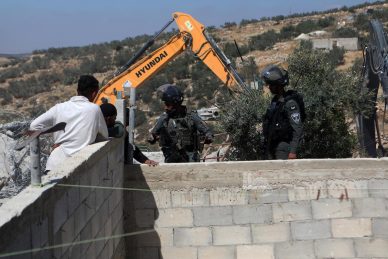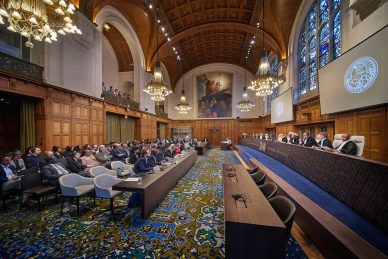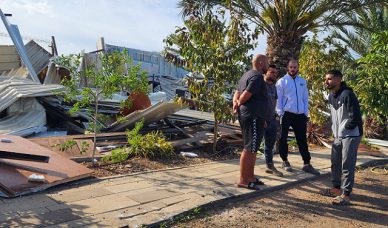At Khirbet al-Shajarah in Salfit city in the West Bank there is a dirt road a huge wall and stones the sounds of birds filling the place oak trees and grapes abandoned olives and the smell of flowers and trees. Palestinians the owners of this archaeological site are not allowed to access it.
Farmers from Salfit told the PIC reporter that the construction of the Apartheid Wall and the expansion of the Jewish settlement of Ariel prevented them from planting trees around the archaeological site known as Khirbet al-Shajra as well as enjoying the beauty of its ancient ruins. The Israeli occupation has completely sealed off the ruins and Palestinians can’t reach the site without obtaining permission.
Annexing Khirbet al-Shajarah
Farmer Mahmoud Nasser from Salfit complained about the isolation of his land in Khirbat al-Shajra and his inability to reach it. The occupation controls the opening and closing of the gates of the wall that lead to his lands and only allows farmers to take care of their lands during specific times which is not sufficient.
Speaking of Khirbat al-Shajara he told the PIC correspondent: “It is beautiful and takes you back in time as you walk through it. The walls the graves the wells the caves the corridors the huge trees especially the oak and grape trees and the singing birds.”
According to a recent report by the Ruyaa Center Palestinian archaeological sites have been one of the most important factors that determine Jewish-only settlement construction in the West Bank.
The same applies to the construction of the Apartheid Wall whose route has changed more than once to include a number of archaeological sites under the full control of the occupation.
The Center pointed out that 53% of the sites and monuments in the West Bank numbering 7000 are under the control of the occupation being located in areas classified as C and 15% of the total number of archaeological sites in the West Bank have been annexed inside the Apartheid Wall in addition to the disappearance of some 5000 archaeological sites believed to have been destroyed by the Israeli occupation as the number of archaeological sites was around 12000 according to statistics by the British Mandate of Palestine. The Israeli occupation declared that there are only 7000 archaeological sites in the West Bank.
A War crime
Dr. Khaled Maali said that the Israeli bulldozers caused the destruction and the excavation of the ruins of Khirbat al-Shajara including olive presses and ancient grapes etched in the rocks around the ancient site. The occupation authorities preserved its main landmarks and opened a side-road for the use of Jewish settlers only. Jewish settlers conduct tours in the area from time to time.
He pointed out that the destruction of monuments is a violation of all international agreements which preserve the cultural heritage during armed conflicts such as The Hague Convention of 1954 and international conventions of 1972 which state that occupation powers shall not infringe the cultural heritage of areas under its control.
He stressed that the International Law does not permit levelling the ground around Khirbat al-Shajara. The Statute of the International Criminal Court provides that the deliberate destruction of historic buildings constitutes a war crime.
Maali noted that UNESCO believes that the protection of life and culture are essential and interdependent during armed conflicts and during situations where cultural heritage is at risk.
He stressed that the occupation aims to control the historical narrative through its publications of photographs and studies on its right to these archaeological sites to indicate that it is part of its history which is considered a clear forgery of history.














